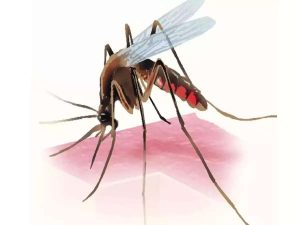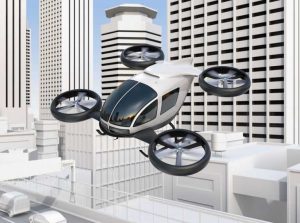Today Current Affairs:7th June 2022 for UPSC IAS exams, State PSC exams, SSC CGL, State SSC, RRB, Railways, Banking Exam & IBPS, etc
Table of Contents
Artificial Lights As a Weapon To Fight Against Malaria:

A study demonstrated that artificial lights can be used as a weapon to fight against malaria.
Key highlights:
- Light plays a crucial role in the regulation of biological clocks such as timing of breeding among birds, hunting by lions and sleeping patterns of humans.
- The timing of day and night has remained relatively constant owing to the earth’s rotation, life on the planet has evolved with such regular day-night cycles.
- Melatonin hormone is a gene responsible for regulating the sleep-awake cycles.
- It is found in plants as well as animals.
- A rapid change in the natural sleep cycles has been observed on account of increased use of artificial light
- Currently, around 80% of the world’s population is living under artificially lit skies.
- Artificial light can alter mosquito biology.
- Malaria-transmitting mosquito species “Anopheles” feeds at night.
- Using artificial light, the mosquitoes can be tricked to behave as if it’s daytime.
- A short pulse of Light Emitting Diode (LED) light, commonly can delay the onset of biting by hours in the mosquito “Anopheles”.
- Therefore, it reduces biting rates and malaria transfer.
French Open Tennis:

In French Open tennis, Spaniard Rafael Nadal has won the 14th singles title of the tournament beating Casper Ruud of Norway 6-3, 6-3, 6-0 in the final.
- With this victory, 36-year-old Nadal has become the oldest champion at Roland Garros. It is his 22nd Grand Slam title.
- In women’s singles, World Number One Tennis player Iga Swiatek clinched this year’s title by beating US teenager Coco Gauf in Paris last evening.
- The 21-year-old polish player won her second Grand Slam title in straight sets 6-1, 6-3 over Gauff who was making her first final appearance at the clay-court Slam.
Tiangong Space Station:

Three Chinese astronauts docked at the country’s space station, marking a new milestone in Beijing’s drive to become a major space power.
- The trio blasted off in a Long March-2F rocket at 0814 IMT from the Jiuquan launch centre in north-western China’s Gobi desert, said broadcaster CCTV.
- The team is tasked with “completing in-orbit assembly and construction of the space station”, as well as “commissioning of equipment” and conducting scientific experiments.
- The spacecraft docked at the Tiangong station after about “seven hours of flight”.
- Tiangong, which means “heavenly palace”, is expected to become fully operational by the end of the year.
- The completed station will be similar to the Soviet Mir station that orbited Earth from the 1980s until 2001.
- China’s heavily promoted space programme has already seen the nation land a rover on Mars and send probes to the Moon.
State Of Environment Report, 2022:

Three of every four river monitoring stations in India posted alarming levels of heavy toxic metals such as lead, iron, nickel, cadmium, arsenic, chromium and copper, according to the State of Environment Report, 2022 from the environmental NGO, the Centre for Science and Environment (CSE).
- The report is an annual compendium of environment-development data and is derived from public sources. Of the 588 water quality stations monitored for pollution, total coliform and biochemical oxygen demand was high in 239 and 88 stations across 21 States — an indicator of poor wastewater treatment from industry, agriculture and domestic households.
- India dumps 72% of its sewage without treatment.
- Ten States do not treat their sewage at all, as per the Central Pollution Control Board.
- Over a third of India’s coastline that is spread across 6,907 km saw some degree of erosion between 1990 and 2018.
- West Bengal is the worst hit with over 60% of its shoreline under erosion.
- The reasons for coastal erosion include increase in frequency of cyclones and sea level rise and activities such as construction of harbours, beach mining and building of dams.
- While the global average of the Ocean Health Index, a measure that looks at how sustainably humans are exploiting ocean resources, has improved between 2012 and 2021, India’s score in the index has declined over the same period.
India Has Achieved The Target Of 10% Ethanol Blending In Petrol:

India has achieved the target of 10% ethanol blending in petrol, five months ahead of schedule, Prime Minister Narendra Modi said.
- This, he claimed, had led to a reduction of 27 lakh tonnes of carbon emissions and saved foreign exchange worth ₹41,000 crore. Farmers earned ₹40,600 crore in the past eight years due to increase in ethanol blending, Mr. Modi said.
- Last June, Mr. Modi made public the “Road map for ethanol blending in India, 2020-25”, which laid out a pathway for achieving 20% ethanol blending by 2025-26.
- The 10% blending target was to be achieved in November 2022.
Ethanol Blending Programme:
- Ethanol is an agro-based product, mainly produced from a by-product of the sugar industry, namely molasses.
Ethanol Blended Petrol (EBP) programme was launched in January, 2003. - The programme sought to promote the use of alternative and environment-friendly fuels and to reduce import dependency for energy requirements.
- Use of ethanol-blended petrol decreases emissions such as carbon monoxide (CO), hydrocarbons (HC), and nitrogen oxides (NOx), the expert committee noted.
- Higher reductions in CO emissions were observed with E20 fuel — 50 per cent lower in two-wheelers and 30 percent lower in four-wheelers.
Exercise SAMPRITI-X:

As part of the ongoing India Bangladesh bilateral defence cooperation, a joint military training exercise Ex SAMPRITI-X is being conducted at Jashore Military Station in Bangladesh from 05 June to 16 June 2022.
- Exercise SAMPRITI is an important bilateral defence cooperation endeavour conducted alternately by both countries which aims to strengthen and widen the aspects of interoperability and cooperation between both the armies.
- During the joint military exercise Ex SAMPRITI-X, armies of both the Nations will share expertise in multiple simulated scenarios of Counter Terrorism, Humanitarian Assistance & Disaster Relief and UN Peacekeeping Force under UN mandate.
What Is eVTOL?

The Union Civil Aviation Minister, recently said that the Government of India is exploring the possibility of inviting manufacturers of Electric Vertical Take off and Landing (eVTOL) aircraft to set up base in India.
- eVTOL: As the acronym suggests, an electric vertical take-off and landing (eVTOL) aircraft is one that uses electric power to hover, take off, and land vertically.
- Most eVTOLs also use what is called as distributed electric propulsion technology which means integrating a complex propulsion system with the airframe.
- This is a technology that has grown on account of successes in electric propulsion based on progress in motor, battery, fuel cell, and electronic controller technologies and also fuelled by the need for new vehicle technology that ensures urban air mobility (UAM).
- As the technology so far is a mix of unpiloted and piloted aircraft, the areas in focus include “crash prevention systems”.
- There are also issues such as ensuring safety in case of powerplant or rotor failure.
- Aircraft protection from cyberattacks is another area of focus.
World’s First Fishing Cat Census Done At Chilika:

The Chilika Lake, Asia’s largest brackish water lagoon, has 176 fishing cats, according to a census done by the Chilika Development Authority (CDA) in collaboration with the Fishing Cat Project (TFCP).
- This is the world’s first population estimation of the fishing cat done outside the protected area network.
- About twice the size of a typical house cat, the fishing cat (Prionailurus viverrinus) is a feline known to even dive to catch fish. Wetlands are the favorite habitats of the fishing cat.
- They are found in 10 Asian countries but have stayed undetected in Vietnam and Java since the last decade or so.
- In India, fishing cats are mainly found in the mangrove forests of the Sundarbans, on the foothills of the Himalayas along the Ganga and Brahmaputra river valleys and in the Western Ghats.
- The globally threatened cats are found in wetlands in major South and Southeast Asian river basins starting from the Indus in Pakistan till the Mekong in Vietnam and in Sri Lanka and Java.
- The fishing cat is listed as Endangered on the IUCN Red List.
- The Convention on International Trade in Endangered Species (CITES) lists the fishing cat on Appendix II part of Article IV of CITES. In India, the fishing cat is included in Schedule I of the Indian Wildlife (Protection) Act, 1972
Stagflation:

Authorities worldwide, particularly central bankers, foresaw a period in the near future “where growth is low, unemployment is at least up a little bit and inflation is still high”, adding, “So you could call that stagflation”.
- The most difficult problem for policymakers is when inflation runs high even as economic output either stagnates or, worse, shrinks.
- The slowdown in economic activity, in turn, leads businesses to shed jobs and the resultant situation is termed as ‘stagflation’.
- One of the classic instances when most economies including the U.S. faced ‘stagflation’ was during the ‘oil shock’ of the early 1970s when an embargo led by the oil producers’ cartel OPEC caused the price of crude to almost quadruple in a period of just under six months.
- While the outbreak of the COVID-19 pandemic and the curbs imposed to contain the spread of the virus caused the first major recent economic slowdown worldwide, the subsequent fiscal and monetary measures taken to address the downturn, including substantial increases in liquidity in most of the advanced economies, fuelled a sharp upsurge in inflation.
- The ongoing war in Ukraine following Russia’s invasion of its southern neighbour and the consequent Western sanctions on Moscow have caused a fresh and as yet hard-to-quantify ‘supply shock’.




